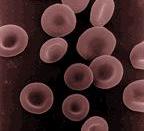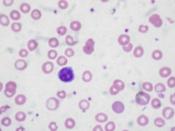Oxygen (O)
Human beings obtain this element from the air. It enters a person's bloodstream through the lungs. The blood carries oxygen to the cells of the body. In the cells, oxygen combines with chemicals obtained from food. Energy produced during this process makes it possible for each cell to perform its function in the body. Also, oxygen atoms are present in water and water is essential to all life. It is present in many organic compounds. While oxygen is necessary for life, oxygen as ozone is highly toxic. On the other hand, ozone is an important component of the atmosphere and helps to shield us from harmful ultraviolet rays from the sun.
Carbon (C)
Carbon is the basis of all life as we know it. It uniquely occupies a chemical niche that allows it to readily form large and complex molecules such as proteins, carbohydrates, nucleic acids and ultimately DNA.
These compounds are the building blocks of life. Although the human body needs vitamin A [ CO 2 ], increasing the amount it naturally gets gives the body an added health advantage. But increasing it to the level of toxicity, can cause liver damage.
Hydrogen (H)
Hydrogen is found in lipids, in the fat that we eat, and in saturated fat. There are a lot of hydrogen atoms in unsaturated lipids, but less hydrogen atoms in double bonded called polyunsaturated lipids.
Nitrogen (N)
Air is made up from 78% nitrogen and almost 21% oxygen. Our bodies don't use the nitrogen, but we need the oxygen that passes into the body by moving across the lung walls in a process called diffusion.
Calcium (Ca)
Calcium is the most common mineral in the human body. Calcium is essential to the growth and maintenance of strong, healthy teeth and bones. It is...



Simple
It a simple and easy way to be introduced to the elements. I could use more work, but it might get more confusing.
3 out of 3 people found this comment useful.